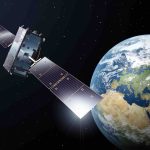TOP-IX Launches Time-as-a-Service Solution with Adtran Oscilloquartz Technology
Adtran has announced that the Turin and Piedmont Internet Exchange (TOP-IX) has launched Italy’s first time-as-a-service (TaaS) solution using Adtran Oscilloquartz technology. Delivered in collaboration with Italy’s National Institute of Metrological Research and other strategic partners, the service leverages Oscilloquartz edge grandmaster devices deployed across TOP-IX’s dedicated fiber network.
By Inside GNSS













